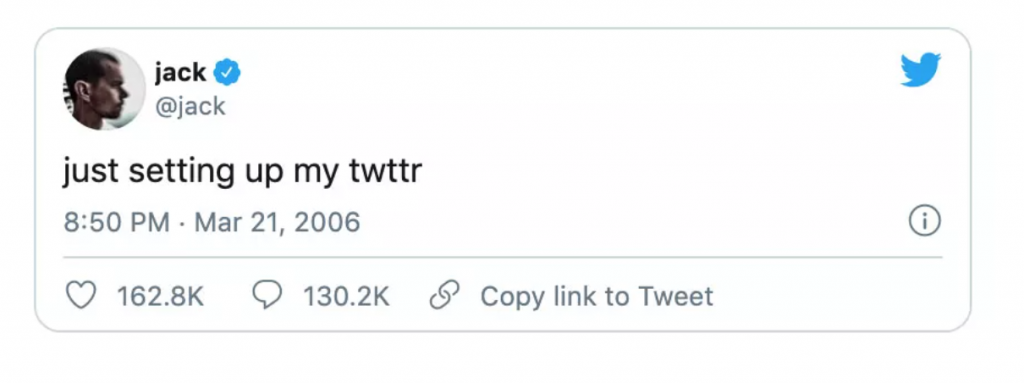What is an NFT? It’s the question on everyone’s mind as digital art explodes in value. While NFTs have been around for a few years, Beeple, CryptoPunks and Bored Ape Yacht Club put this new technology on the map. Since then well-known brands such as Adidas, Nike, Disney, McDonalds and many celebrities have jumped on NFTs.
Answering the question, ‘what is an NFT?’ Here’s the easy part: non-fungible tokens are a way to record an image, video or any form of digital, or even physical, item on a blockchain. It’s decentralised and open.
Whether you decide they’re a speculative fad or a great new possibility for artists, there’s no denying that NFTs are everywhere, and some creatives at least have turned them into a business.
NFT stands for a non-fungible token, which means that, hidden in those quirky artworks, is a unique, non-exchangeable unit of data stored in a digital ‘ledger’ that uses blockchain technology to establish proof of ownership.
Essentially, the same or similar technology used for cryptocurrencies such as bitcoin and ethereum is used to guarantee the uniqueness of each NFT and to prove who owns it.
However, unlike a bitcoin unit, each NFT is completely unique, so it cannot be exchanged on a peer-to-peer basis.
The file stores additional information that elevates it above pure currency and brings it into the realm of, well, anything, really.
As a result, NFTs have become collectible digital assets that have value, just as physical art has value.
Any kind of easily reproducible digital file can be stored as an NFT to identify the original copy.
Essentially, you can make NFT from almost anything unique that can be stored digitally and has value. They are like any other collectible item, such as a painting or an old action figure, but instead of buying a physical item, you are paying for an archive and proof that you own the original copy.
How do NFTs work?
The unique identity and ownership of an NFT can be verified through the blockchain ledger. They were first launched on the Ethereum blockchain, but are now also compatible with other blockchains, including FLOW and Bitcoin Cash.
Whether the original file is JPG, MP3, GIF or anything else, the NFT that identifies your property can be bought and sold like any other type of art and, as with physical art, the price is largely set by market demand.
If you walk into the gift shop of an art gallery, you will find a number of reproductions of famous masterpieces – well, there are some NFTs that act in the same way. There are parts of the blockchain that are totally valid, but would not have the same value as the original.
Most likely, NFTs come with a licence to the digital asset they point to, but this does not automatically confer copyright ownership. The copyright owner can reproduce the work and the NFT owner does not get royalties.

Don’t go thinking you’ve hacked the system and become a millionaire by right clicking and saving Beeple’s Everydays – The first 5000 days image above. That’s just what NFTs are not.
The images above are simply a copy, in JPG format, of the original work. In reality, it is not the NFT itself because the file does not contain the information that makes it part of the blockchain and identifies it as the original.
Where can I buy NFT?
There are marketplaces where you can buy or sell NFT, one of the most famous is OpenSea. Other platforms where you can buy NFT are:
- SuperRare
- Nifty Gateway
- Foundation
- VIV3
- BakerySwap
- Axie Marketplace
- Rarible
- NFT ShowRoom
Where are NFTs stored?
Essentially, there are three main ways to store your NFTs. Unfortunately, the most popular option is also the least secure:
Software wallets
You can store your NFTs in a Metamask wallet. You are password protected and secured with a 12-24 initial passphrase. In addition, each transaction is also encrypted, but it is not the most secure method if you have high-value assets.
IPFS (Interplanetary File System)
When you use an IPFS, your NFTs are stored off-chain. This option uses an identification code (CID) linked to the content of your NFT. This type of data cannot be changed (unlike a URL, which can be changed at any time).
One example is Pinata, a dedicated storage system that continues to grow in popularity.
In particular, all this important data is stored directly on your computer. As a result, you will receive a notification every time someone tries to access the data, as the system can detect hacker nodes.
It is definitely more secure than a digital wallet. However, if someone hacks into your computer, there is no way you can protect your NFTs in time.
Moreover, if the IPFS itself fails, so do your digital assets. This problem brings us to the third (and final) storage option.
Hardware wallets
If this sounds like the opposite of a software wallet, that’s because it is.
Any NFT added to a hardware wallet is stored 100% offline and is password protected.
Perhaps the best part of hardware wallets is that you can connect them to the Internet and use them as active wallets as well. However, due to the technology of the device, your assets are still safe from hackers.
The best way to protect our NFTs is to store them securely and follow common practice in terms of passwords and software wallets.
Now that you know all about NFTs, are you thinking of acquiring one in the near future?

